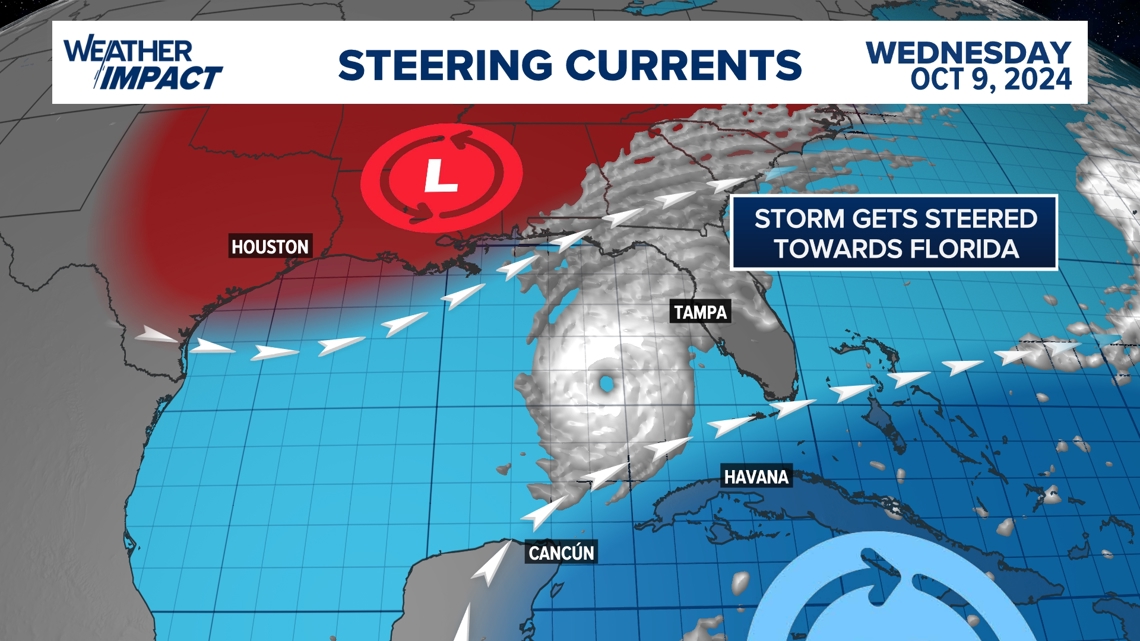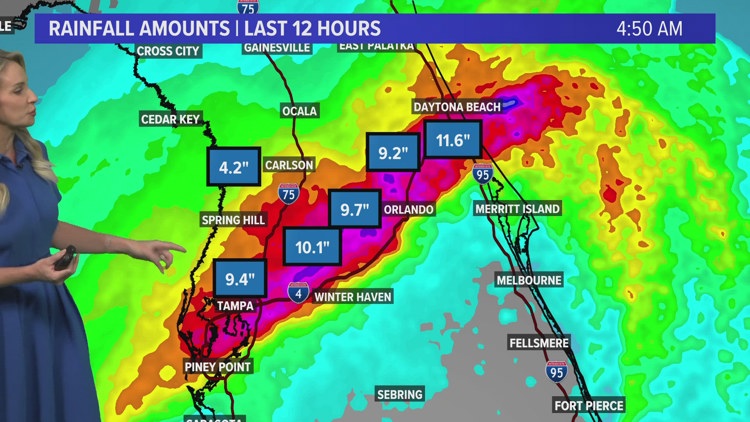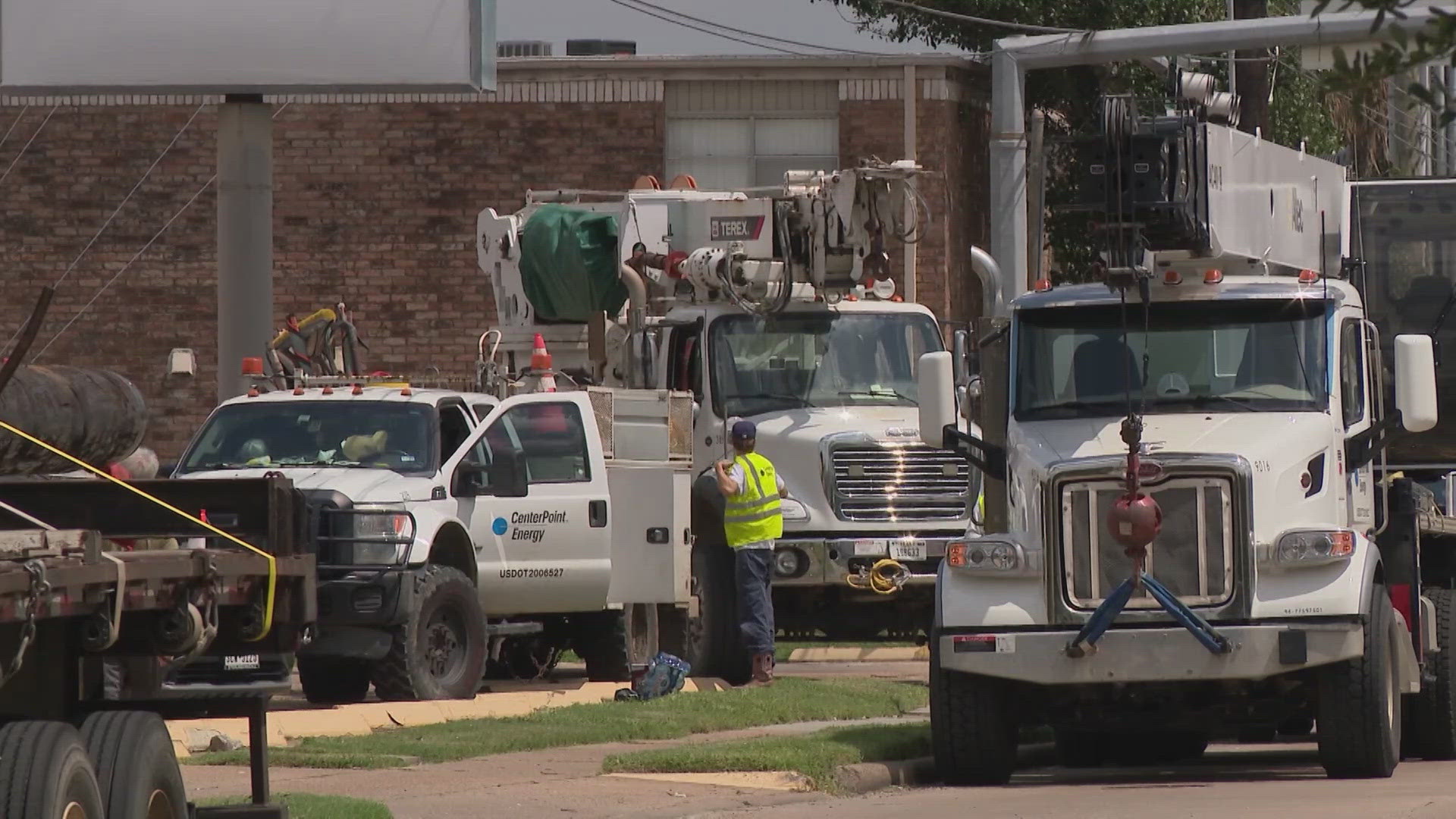HOUSTON — Hurricane Milton made landfall Wednesday along Florida’s Gulf Coast as a Category 3 storm, bringing powerful winds, deadly storm surge and potential flooding to much of the state. Milton drew fuel from exceedingly warm Gulf of Mexico waters, twice reaching Category 5 status.
The cyclone had maximum sustained winds of 120 mph (205 kph) when it roared ashore in Siesta Key, Florida, at 8:30 p.m., the Miami-based National Hurricane Center said. The storm was bringing deadly storm surge to much of Florida’s Gulf Coast, including densely populated areas such as Tampa, St. Petersburg, Sarasota and Fort Myers.
At 4 a.m. Thursday, the NHC said Milton was moving off Florida's east-central coast as a category 1 storm. It was moving northeast at 18 mph with max sustained winds of 85 mph.
Here’s the latest:
More than 3 million Florida power customers plunged into darkness
The Associated Press reported early Thursday morning that Hurricane Milton left more than 3 million Florida customers without power after landfall.
There are more than 11.5 million power customers in Florida, according to PowerOutage.us.
Milton didn't hit Tampa directly, but the area is still seeing its deadly effects
Hurricane Milton made landfall in Siesta Key, Florida, on Wednesday, the National Hurricane Center said. It is a barrier island off Sarasota with white-sand beaches and has about 5,500 residents.
The community is about 70 miles (113 kilometers) south of Tampa. While the city did not take a direct hit, Hurricane Milton was still producing deadly storm surge and powerful winds in the area.
Hurricane Milton makes landfall in Florida as a Category 3 storm
Hurricane Milton made landfall Wednesday along Florida’s Gulf Coast as a Category 3 storm, bringing powerful winds, deadly storm surge and potential flooding to much of the state. Milton drew fuel from exceedingly warm Gulf of Mexico waters, twice reaching Category 5 status.
The cyclone had maximum sustained winds of 120 mph (205 kph) when it roared ashore near Siesta Key, Florida, at 8:30 p.m., the Miami-based National Hurricane Center said. The storm was bringing deadly storm surge to much of Florida’s Gulf Coast, including densely populated areas such as Tampa, St. Petersburg, Sarasota and Fort Myers.
Hurricane Milton spawns multiple tornadoes across Florida
Multiple tornadoes spawned by the hurricane tore across Florida, the twisters acting as a dangerous harbingers of Milton’s approach.
Three Florida offices of the National Weather Service in Miami, Tampa and Melbourne issued more than 130 tornado warnings associated with Hurricane Milton by Wednesday evening.
Videos posted to Reddit and other social media sites showed large funnel clouds over neighborhoods in Palm Beach County and elsewhere in the state.
Luke Culver, a meteorologist with the National Weather Service in Miami, said he wasn’t sure whether Milton had spawned a record number of tornados, but he pointed out that only 64 Florida tornado warnings were associated with Hurricane Ian, which hit the Tampa Bay area as a massive storm in 2022.
Tornadoes produced by hurricanes and tropical storms most often occur in the right-front quadrant of the storm, but sometimes they can also take place near the storm’s eyewall, according to the National Oceanic and Atmospheric Administration.
The heat and humidity present in the atmosphere during such storms and changes in wind direction or speed with height, known as wind shear, contribute to their likelihood.





